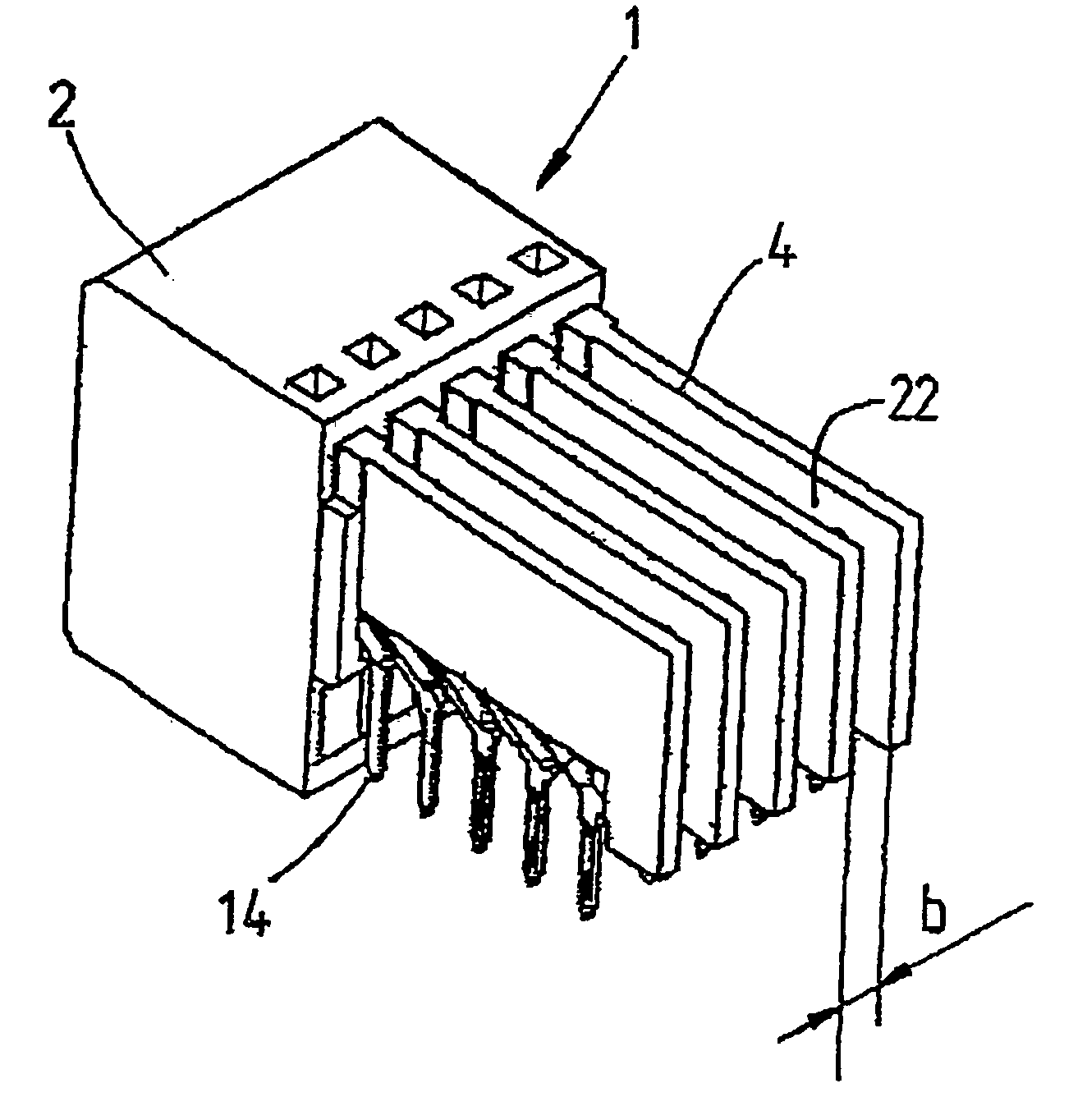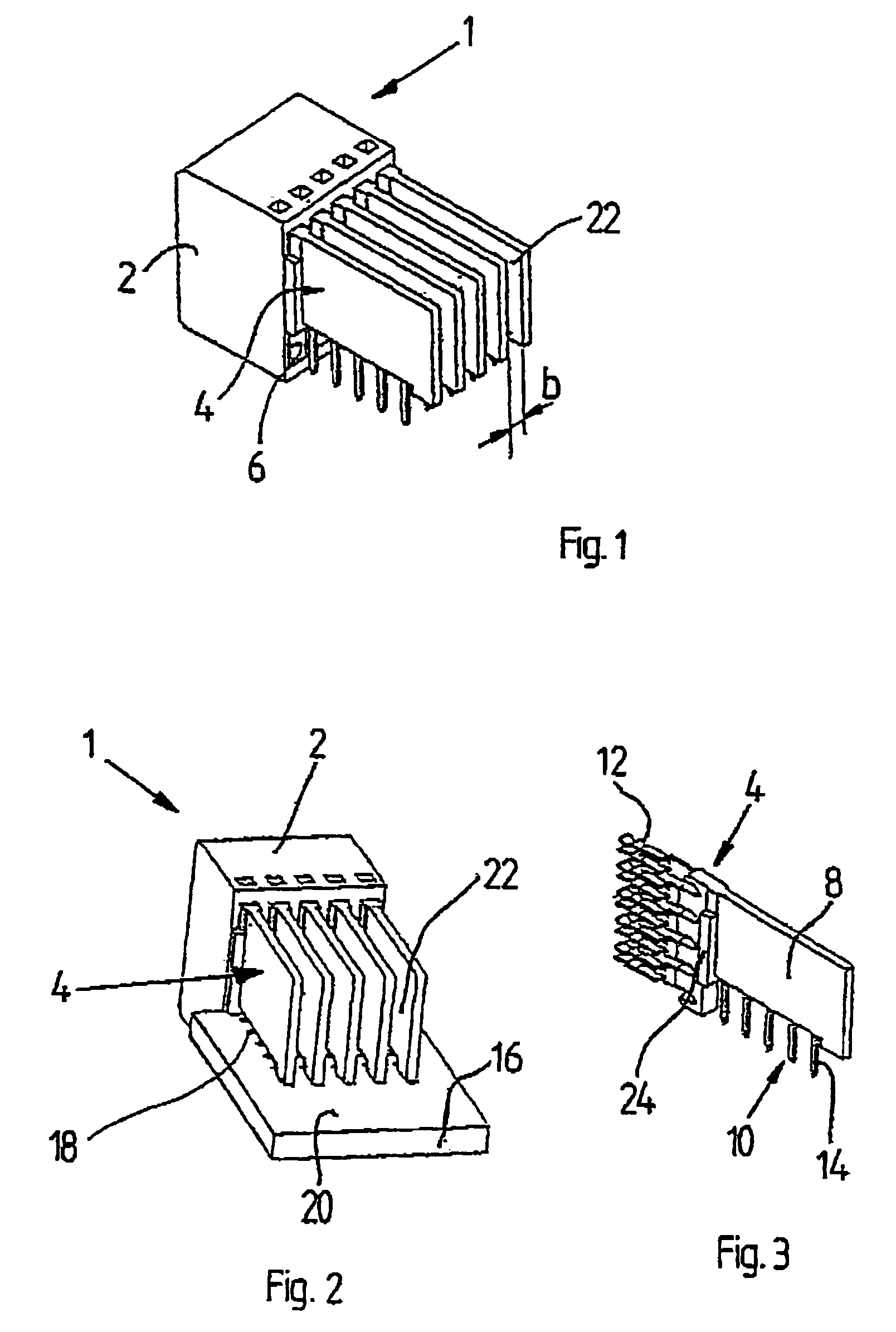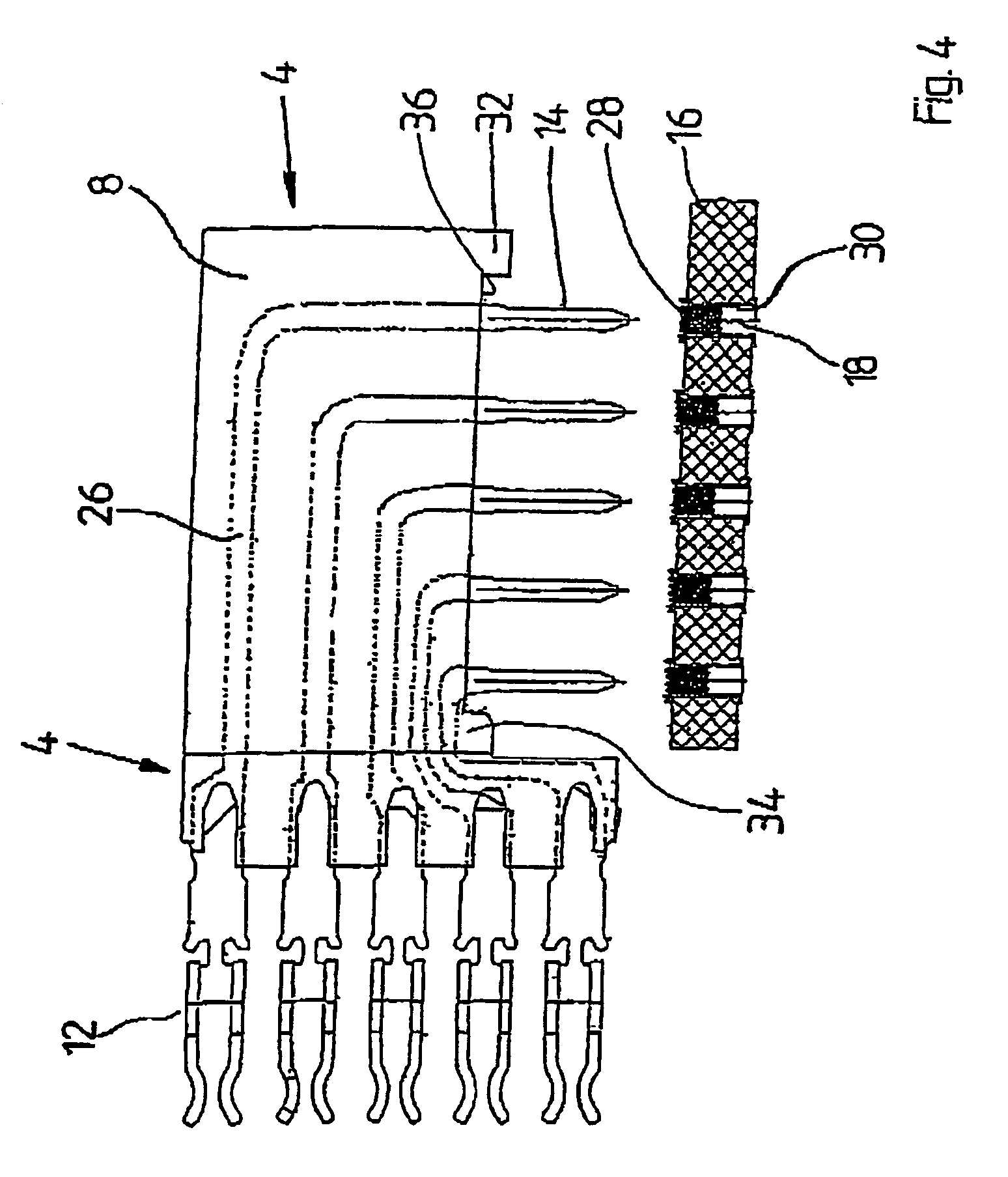Connector
a plug-in connector and plug-in technology, applied in the direction of electrical equipment, basic electric elements, coupling device connections, etc., can solve the problems of insufficient supply, insufficient solution, essential drawbacks of surface soldering process, etc., to reduce mechanical stability of plug-in connectors, increase heat exchange area, and improve thermal conduction in the range of soldering tags
- Summary
- Abstract
- Description
- Claims
- Application Information
AI Technical Summary
Benefits of technology
Problems solved by technology
Method used
Image
Examples
Embodiment Construction
[0039]FIG. 1 shows a simplified three-dimensional representation of a plug-in connector 1 in through-hole technology. This plug-in connector 1 has a carrier part 2 in which adjacently positioned wafers 4 are arranged. The carrier part 2 has recesses 6 wherein the wafers 4 are inserted by an end portion thereof. In accordance with FIG. 3 each wafer 4 includes an insulating material 8 wherein contact elements 10 are embedded. These extend through the insulating material 8 along the plane defined thereby, wherein in the representation in accordance with FIG. 3, in the horizontal direction flexible tongue-type contact terminals 12 and in a vertical downward direction soldering tags 14 offset at right angles to each other protrude from the insulating material 8. The contact terminals 12 with the adjacent end portion of the insulating material 8 are inserted in the recesses 6 of the carrier part 2.
[0040]In accordance with FIG. 2, the plug-in connector 1 formed with a multiplicity of wafer...
PUM
 Login to View More
Login to View More Abstract
Description
Claims
Application Information
 Login to View More
Login to View More - R&D
- Intellectual Property
- Life Sciences
- Materials
- Tech Scout
- Unparalleled Data Quality
- Higher Quality Content
- 60% Fewer Hallucinations
Browse by: Latest US Patents, China's latest patents, Technical Efficacy Thesaurus, Application Domain, Technology Topic, Popular Technical Reports.
© 2025 PatSnap. All rights reserved.Legal|Privacy policy|Modern Slavery Act Transparency Statement|Sitemap|About US| Contact US: help@patsnap.com



